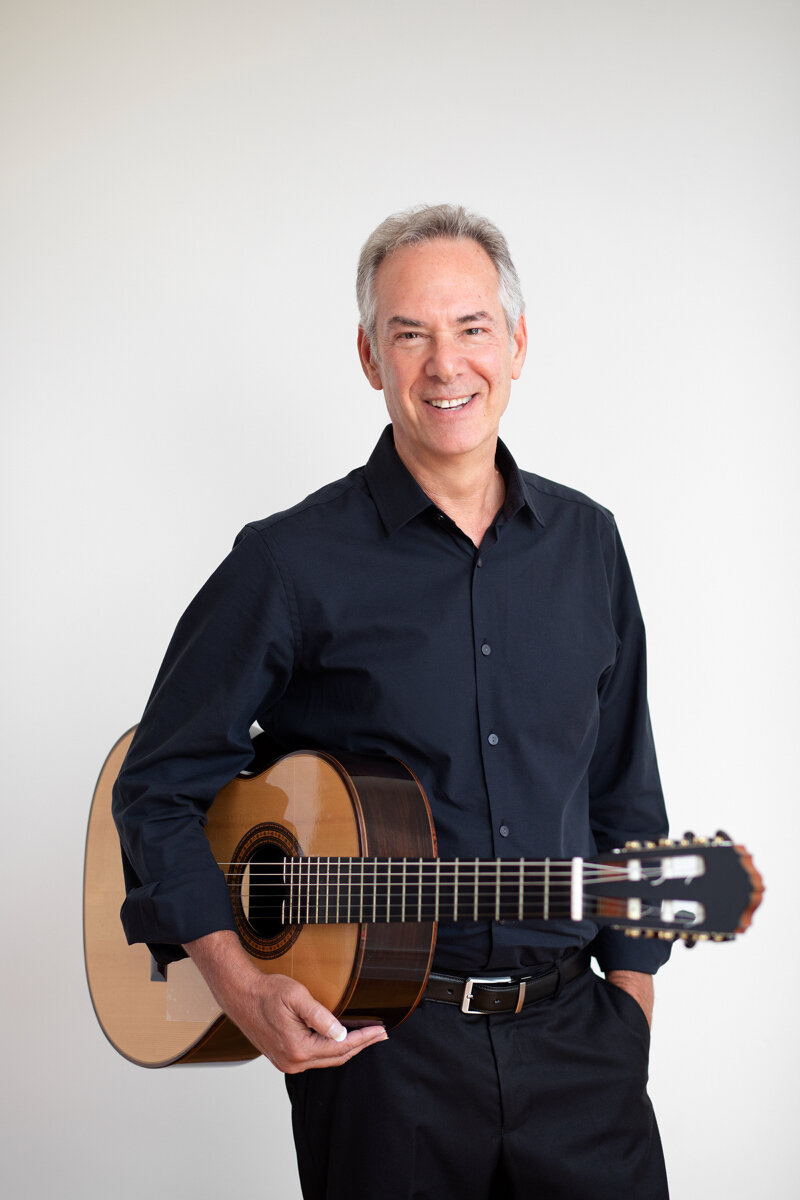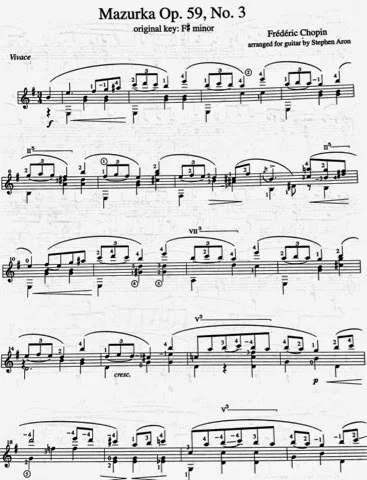It is not news that guitarists are generally weak sight-readers. This unfortunate fact is reinforced for me every time I travel, teaching master classes at other institutions, at nearly every audition I conduct, and of course, in the weekly lessons I teach. Why is this? Is it important? If so, what can we do about it?
We often fall back on the physical/musical layout of the instrument for an excuse: as most notes occur in a multitude of locations, discerning which one is correct, in real time, is a real challenge. But we only read one clef-- what about a pianist's grand staff, or an organist's three? Or a singer's need to catch not only the music but the text as well, usually in a foreign language, or the orchestra conductor's need to be able to read across all those staves, with a wide range of clefs and transpositions, simultaneously? By these measures, our difficulties seem to pale. And yet few guitarists shine in this arena.
Why does this matter?, you might think. After all, most performers play their programs by memory. Here are just a few reasons sight-reading is worth working on.
Excellent sight readers...
Excellent sight readers...
-learn new music faster
-can readily assess unfamiliar scores to find prospective new material easily
-have more productive experiences when playing chamber music
-are not restricted in their teaching to pieces they already know so teach more varied repertoire
-are never embarrassed in master classes when asked to start "in the middle"
-end up knowing both their instruments and the elements of music better, making for a richer music-making experience.
I've always told my students in their first year that if they simply spend 5-10 minutes/day sight-reading, they'll end up the best readers who ever graduated in guitar, four years later. But no one has ever taken me up on the challenge. Why? It seems an easy enough thing to do...
Sight-reading is what happens the first time you see/play a score. The second time through no longer qualifies. (Of course there are benefits to playing through a second time and more, but that qualifies as learning the piece, and no longer as sight-reading.) In order to do it consistently, you need to assemble piles of level-appropriate material to play through, each piece once. This is easy now, though, with the plethora of free public domain scores online, so should hardly present much of a barrier.
It requires a bit of concentration. To productively sight-read, you need to first scan the score to check out the key signature, the time signature, the tempo and expression markings; then the range and likely positions you'll be playing in, and the various rhythmic figures you'll have to navigate. Then, perhaps somewhat under tempo, try it.
I've always told my students in their first year that if they simply spend 5-10 minutes/day sight-reading, they'll end up the best readers who ever graduated in guitar, four years later. But no one has ever taken me up on the challenge. Why? It seems an easy enough thing to do...
Sight-reading is what happens the first time you see/play a score. The second time through no longer qualifies. (Of course there are benefits to playing through a second time and more, but that qualifies as learning the piece, and no longer as sight-reading.) In order to do it consistently, you need to assemble piles of level-appropriate material to play through, each piece once. This is easy now, though, with the plethora of free public domain scores online, so should hardly present much of a barrier.
It requires a bit of concentration. To productively sight-read, you need to first scan the score to check out the key signature, the time signature, the tempo and expression markings; then the range and likely positions you'll be playing in, and the various rhythmic figures you'll have to navigate. Then, perhaps somewhat under tempo, try it.
I've always encouraged guitar students to stock up on music in single lines. Especially useful: flute and violin music of Telemann, Corelli, Handel, CPE Bach, Leopold Mozart, Quantz, etc.
Why single line music? Because when an inexperienced guitarist to tries sight-read multiple voices simultaneously, frustration is the inevitable result. In some ways this gets to a bigger issue--that of learning to understand melody, but I'll save that for another post. Single lines permit the eyes to focus on one thing, allowing for a greater probability of success.
Why Baroque and early classical music? Because the more exposure students get to the rhetoric of the Baroque and classical styles, the clearer a sense of this music they will have throughout their musical lives. This period represents the foundation of western classical music, and no amount of repertoire experienced in it is too much. They will encounter, over and over again, standard harmonic sequences, familiar cadential formulae, traditional phrase lengths, style-specific rhythmic figures and so on.
Why flute and violin music? Because the pieces are in treble clef and are generally in keys friendly to the guitar. Once one is well in control of this music, they should try solo trumpet and clarinet music, as those scores tend toward flat keys. A sensible method is to get duets, trios and quartets and read each part in turn. Naturally, if you have a friend at a similar level, reading in ensemble is great fun and encourages pressing forward instead of hesitating or stopping.
Why Baroque and early classical music? Because the more exposure students get to the rhetoric of the Baroque and classical styles, the clearer a sense of this music they will have throughout their musical lives. This period represents the foundation of western classical music, and no amount of repertoire experienced in it is too much. They will encounter, over and over again, standard harmonic sequences, familiar cadential formulae, traditional phrase lengths, style-specific rhythmic figures and so on.
Why flute and violin music? Because the pieces are in treble clef and are generally in keys friendly to the guitar. Once one is well in control of this music, they should try solo trumpet and clarinet music, as those scores tend toward flat keys. A sensible method is to get duets, trios and quartets and read each part in turn. Naturally, if you have a friend at a similar level, reading in ensemble is great fun and encourages pressing forward instead of hesitating or stopping.
Once one has spent large amounts of time (a year...) on single-line music, then of course, read guitar music. But start easy: Carulli, Carcassi, Giuliani pedagogical works and other entry-level pieces. Work towards more complex material very, very gradually.
One of the things you learn quickly when sight-reading is the necessity of looking ahead. As in reading (words) aloud, one's eyes will always be on the next thing (note, measure, phrase) when sight-reading, and not on what is currently sounding.
I find when I sight-read a lot, I always experience a rapid improvement curve, as if I always start off a bit rusty, but quickly find my footing. For me, it feels like a door opens in my mind, a door through which the music begins to flow very smoothly, from my eyes to my fingers with no or little delay. The very act of practicing sight-reading effectively creates new neural pathways, ones which with frequent attention can be made quite reliable, effectively keeping that door open.
My friend and colleague, Stanley Yates, guitar professor at Austin Peay State University in TN, is prodigious sight-reader. He has often sat down and played through entire composer catalogues. Through doing so, he can say with confidence that a composer, say, Mertz, or Tarrega (or whoever) has written a number of excellent but effectively unknown works, since people tend to always play the same ones. He knows because he's played them all. Not many people do this. But it seems like an obvious thing, doesn't it? People often complain about the paucity of good pieces in the repertoire, the very same people who haven't read once through even a 10th of it.
I think sight-reading is critical. Doing it regularly makes it part of your normal, daily musical experience. You'll know vast amounts of music, be categorically unafraid of new scores, be at ease playing chamber music, know better your own instrument.
Memorizing is great, but sight-reading is essential.

